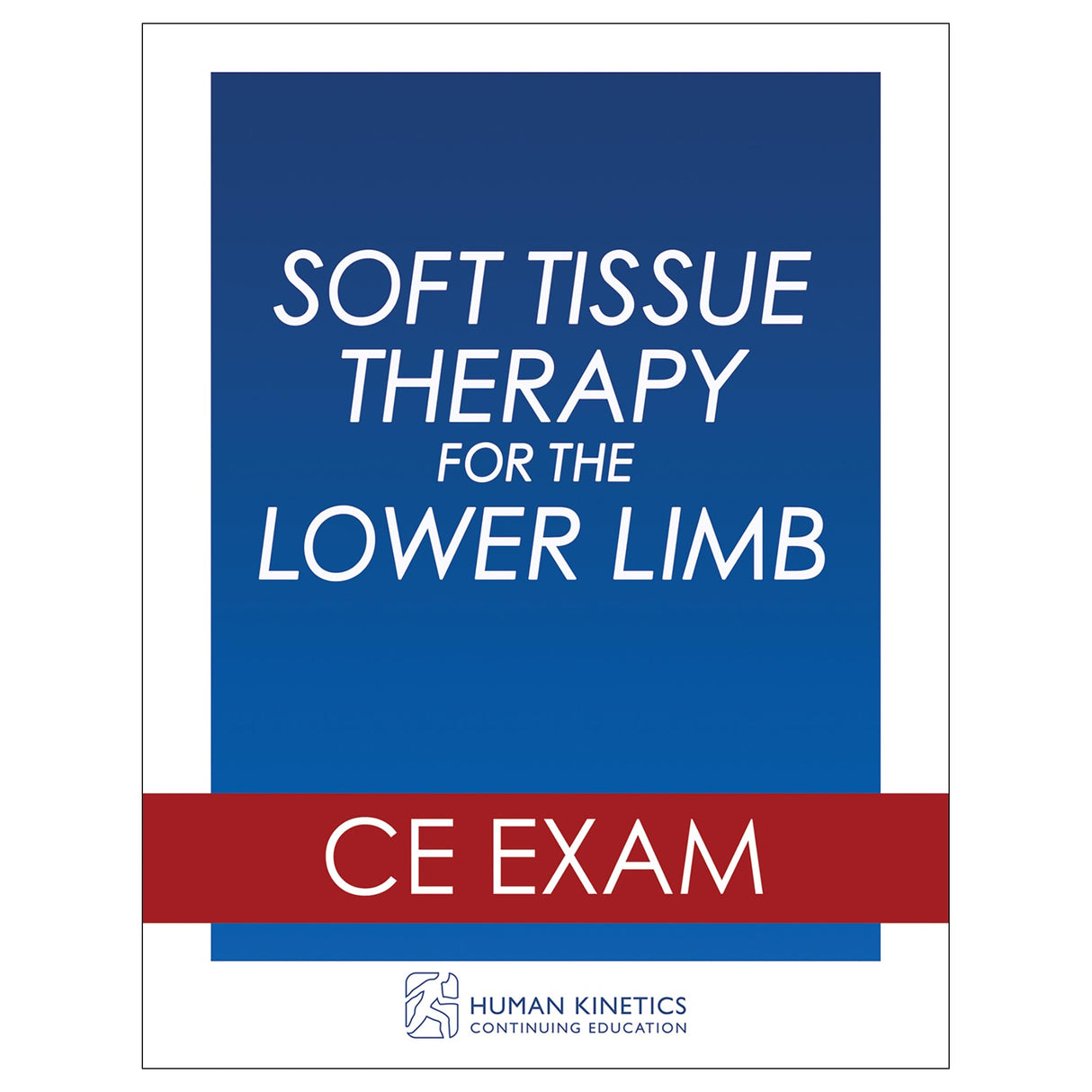Soft Tissue Therapy for the Lower Limb Online CE Exam Without Book
Author: Human Kinetics
$122.95 CAD
Human Kinetics strongly recommends that you complete your exam within the calendar year of your date of purchase to ensure approved credits do not expire for your organization.
Consisting of 100 multiple-choice and true-false questions, this continuing education exam is designed to be taken after reading Soft Tissue Therapy for the Lower Limb. The exam will test your knowledge of the information presented in the book so you can effectively apply soft tissue techniques for common lower limb conditions.
Once you pass the exam, you can print a certificate for continuing education credits.
Learning Objectives
- Assess the posture of a client, focusing on the pelvis and lower limb, and identify postural imbalances in the pelvis, hips, knees, ankles and feet.
- Describe the consequences of pelvic and lower limb postural imbalances.
- Provide examples of overall treatment aims and develop specific treatment goals.
- Determine the most appropriate way to measure the effectiveness of your treatments.
- Use the forearms, fists or elbows as appropriate when applying massage to treat piriformis syndrome, groin strain and tight hip adductors.
- Identify the soft tissue technique appropriate for each of the common conditions affecting the lower limb.
- Demonstrate the application of massage, soft tissue release and passive stretching for use in the treatment of conditions affecting the lower limb.
- Teach active stretches that are effective for use in the treatment of common lower limb conditions.
- List eight reasons an exercise plan might fail, and provide a solution for each.
- Perform simple tests to determine the length and strength of hip, knee and ankle muscles.
- Teach hip, knee, ankle and foot strengthening exercises, providing examples in different positions such as prone, supine, sitting and standing.
- Explain how to make lower limb strengthening exercises harder or easier and how to make them functional.
- Illustrate a safe, simple way to test balance and teach exercises that are appropriate for common conditions affecting the lower limb.





